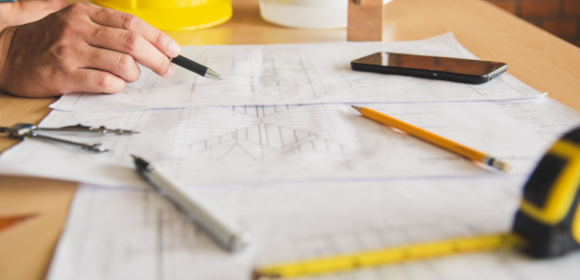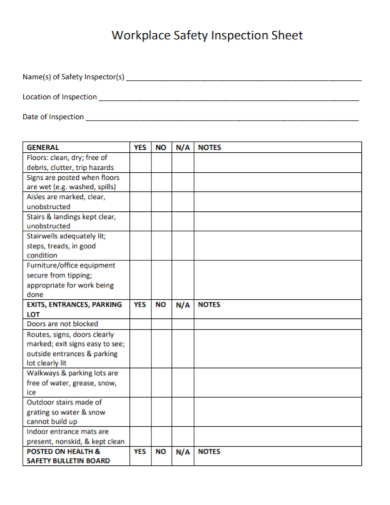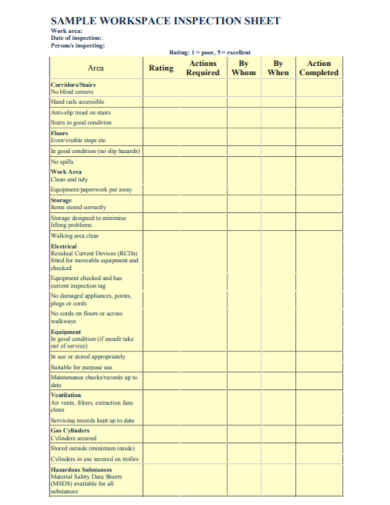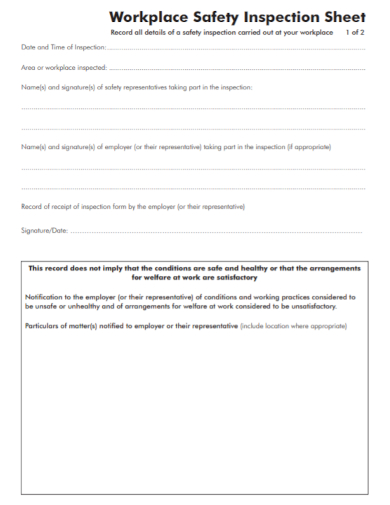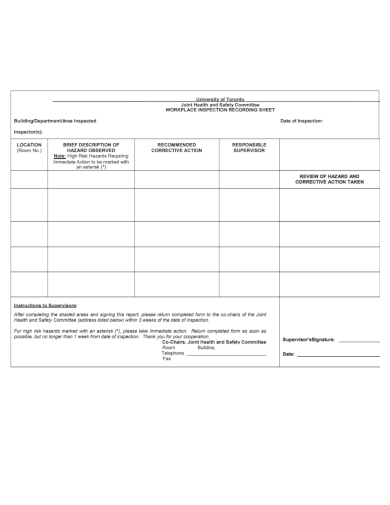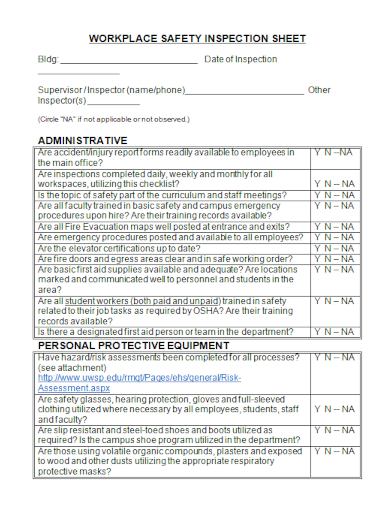It’s important for every worker and employee to feel safe in their workplace. They must feel confident and assured that they are safe from hazards and risks. This will help them be more focused on their tasks and increase their productivity greatly. To achieve a safe workplace, inspections must be done regularly to find out any potential risks and take care of those before they escalate. This article will guide you on how workplace inspections are done.
4+ Workplace Inspection Sheet Samples
1. Workplace Safety Inspection Sheet
2. Workplace Inspection Sheet
3. Sample Workplace Safety Inspection Sheet
4. Workplace Inspection Record Sheet
5. Workplace Safety Equipment Inspection Sheet
The Importance of Workplace Inspection
Workplace inspections help prevent incidents, injuries, and illnesses by identifying hazards and record them for corrective action. workplace inspections are an important part of the overall occupational health and safety program and management system if present.
How to Do a Workplace Inspection
Here is a general rundown on how workplace inspections are done:
1. Reach an Agreement
If you’re the person responsible to do the inspection, you must agree with the people you are inspecting on what needs to be inspected in the workplace (such as specific areas in the facility, or the equipment) and how to conduct the inspection.
2. Read Past Inspection Reports
Before doing the inspection right away, it is helpful to read the past inspection reports to use as a reference to check for any issues identified before and whether these have been fixed. The reports will also be used as your basis in your inspection.
3. Conduct the Inspection
Now is the time to do the inspection. Your inspection can be carried out by walking around your premises to check and identify any issues such as unsafe conditions or unsafe work practices around. You can also carry out more formal ways of inspection such as:
- Safety tours: Inspect the whole workplace and the operations in general
- Safety sampling: Thoroughly examine some specific dangerous activities, processes, or work areas
- Safety surveys: Inspect specific dangerous activities, processes, or work areas in general
- Incident inspections: Investigate the causes of accidents, incidents, and events that could have resulted in an injury or illness.
Record your findings in a notebook or use a checklist to remind you what to look out for. Keep your records for your inspection report and to use for your corrective action plan.
4. Address the Issues Identified During the Inspection
It’s highly important to make a corrective action plan to take care of the issues discovered and identified during the inspection. Have a procedure and plan in place and assign an employee who will be responsible to address and fix the issues and give them a deadline to complete it. Make sure to do a follow-up inspection to see if the issues were fixed. If the identified risks are many and grave, talk with other health and safety officers to update any risk assessments or work procedures relating to the issues identified.
FAQs
What are the different types of hazards in the workplace?
- Safety hazards: A safety hazard can cause slips, trips, and falls. Furthermore operating dangerous machinery and electrical equipment can also be hazardous
- Biological hazards: Biological hazards mean exposure to dangerous substances and diseases associated with infectious materials or people or animals infected with diseases.
- Physical hazards: Physical hazards can affect employees who work in extreme weather conditions or harmful environments.
- Ergonomic hazards: These hazards can put strains on workers’ bodies. Employees who do manual labor or have improper workstations are highly at risk with these hazards.
- Chemical hazards: Chemical hazards pose risks to workers who are exposed to dangerous liquids, hazardous chemicals, or flammable gases.
Who should be on the inspection team?
Health and safety officers are the main people who make up the inspection team. They are the personnel who are qualified to conduct, plan, and monitor workplace inspections, and they have the knowledge, training, and experience dealing with workplace inspections. To help these officers understand the processes, operations, and procedures in the workplace, engineers, maintenance personnel, janitors, security personnel, or supervisors are called to explain those actions.
What is the purpose of inspections?
The purpose of inspections in the workplace is that it allows supervisors to listen to the concerns of the employees, identify existing and potential hazards and know their underlying causes, recommend corrective actions to those hazards, and monitor all the safety precautions taken to eliminate and control those risks.
The frequency of the inspection being conducted in the workplace will depend on what type of work you do, for example, a low-risk working environment like an office needs less inspecting compared to a workplace that requires intense labor and use of machinery and heavy equipment such as a construction project. Another factor of the frequency of inspection will base on your risk assessment. Use your inspection sheet during your inspection. To help you get started making your inspection sheet, download our free sample templates above to use as your guide!
Related Posts
FREE 14+ Sample Health and Safety Policy
FREE 13+ Sample Accident Incident Reports
FREE 12+ Office Maintenance Schedule Samples
FREE 11+ Sample Inspection Reports
FREE 11+ Sample Maintenance Request Forms
FREE 10+ Sample Risk Assessment Checklist
FREE 8+ Housekeeper Checklist Samples
FREE 53+ Information Sheet Examples
FREE 37+ Risk Assessment Forms
FREE 28+ Cleaning Checklist Samples
FREE 19+ Delivery Checklist Samples
FREE 11+ External Audit Report Samples
FREE 10+ Sample Construction Risk Assessment
FREE 10+ Facilities Management Report Samples
FREE 5+ Retail Store Cleaning Checklist Samples
